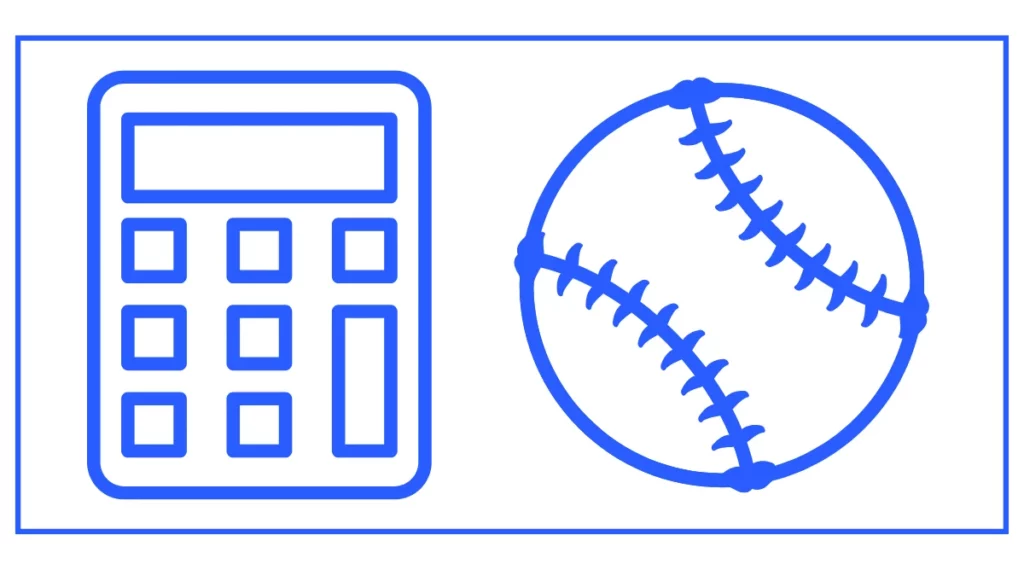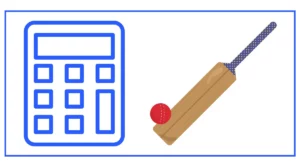WAR Calculator (Wins Above Replacement)
Are you looking for an easy way to calculate a player’s performance compared to the total team performance?
The WHIP calculator helps you calculate the player’s contribution to the team wins.
WHIP is different for a position player and a pitcher.
For a position player, enter the batting runs, base running hits, fielding runs, positional adjustment, replacement runs, and runs per win.
For a pitcher, enter the runs per win, league FIP, FIP, replacement level, innings pitched, Leverage multiplier for relievers, and league correction.

You might also want to use these baseball whips and slugging conversion tools.
What is WAR and Why is it Important?
WAR, or Wins Above Replacement, is a baseball statistic that attempts to quantify a player’s total contributions to their team. It estimates the number of additional wins a player provides to their team compared to a replacement-level player (typically a minor league call-up or a readily available free agent).
WAR is important because it:
- Provides a single, comprehensive metric to evaluate players
- Allows for comparisons across different positions and eras
- Considers both offensive and defensive contributions
- Adjusts for league and ballpark factors
Understanding and calculating WAR can greatly enhance your appreciation of player performance and team construction strategies in MLB.
Introducing the WAR Calculator Tool
The WAR calculator presented here is a user-friendly tool designed to help baseball fans calculate WAR for both position players and pitchers. It offers separate calculation methods for each player type, reflecting the different components that contribute to their value.
Features of the WAR Calculator
- Toggle between position players and pitchers
- Input fields for all relevant WAR components
- Instant calculation of WAR based on provided inputs
- Clean, intuitive interface for easy use
How to Use the WAR Calculator
Calculating WAR for Position Players
To calculate WAR for position players, follow these steps:
*Select “Position Player” from the dropdown menu
* Input values for:
- Batting runs
- Base running hits
- Fielding runs
- Positional adjustment
- League adjustment
- Replacement runs
- Runs per win
*Click “Calculate WAR”
The calculator will then display the player’s WAR value.
Calculating WAR for Pitchers
To calculate WAR for pitchers:
Select “Pitcher” from the dropdown menu
Input values for:
- Runs per win
- League FIP
- FIP (Fielding Independent Pitching)
- Replacement level
- Innings pitched
- Leverage multiplier for relievers
- League correction
Click “Calculate WAR”
The tool will then show the pitcher’s calculated WAR.
Understanding the Components of WAR
To effectively use the WAR calculator, it’s crucial to understand the components that go into the WAR calculation for both position players and pitchers.
WAR Components for Position Players
- Batting Runs: Measures a player’s offensive contribution compared to league average.
- Base Running Hits: Quantifies a player’s value on the basepaths.
- Fielding Runs: Evaluates a player’s defensive contributions.
- Positional Adjustment: Accounts for the differing defensive difficulty of various positions.
- League Adjustment: Normalizes performance across different leagues (AL vs. NL).
- Replacement Runs: Represents the value of a replacement-level player.
- Runs Per Win: Converts runs to wins, typically around 10 runs per win.
WAR Components for Pitchers
- Runs Per Win: Similar to position players, converts runs to wins.
- League FIP: The league average Fielding Independent Pitching.
- FIP: The pitcher’s individual Fielding Independent Pitching.
- Replacement Level: The expected performance of a replacement-level pitcher.
- Innings Pitched: Total innings pitched by the player.
- Leverage Multiplier: Accounts for the importance of situations faced by relievers.
- League Correction: Adjusts for differences between leagues.
Practical Examples Using the WAR Calculator
Let’s walk through some examples to illustrate how to use the WAR calculator effectively.
Example 1: Calculating WAR for a Position Player
Let’s calculate the WAR for a hypothetical outfielder named John Smith for the 2022 season. We’ll use the following data:
- Batting Runs: 30
- Base Running Hits: 5
- Fielding Runs: 10
- Positional Adjustment: -7.5 (for corner outfielders)
- League Adjustment: 0
- Replacement Runs: 20
- Runs Per Win: 10
Input these values into the calculator and click “Calculate WAR”. The result shows:
WAR: 5.75
This indicates that John Smith contributed about 5.75 wins above a replacement-level player during the 2022 season, a very good performance.
Example 2: Calculating WAR for a Pitcher
Now, let’s calculate the WAR for a starting pitcher, Sarah Johnson, using these hypothetical stats:
- Runs Per Win: 10
- League FIP: 4.20
- FIP: 3.50
- Replacement Level: 0.03
- Innings Pitched: 200
- Leverage Multiplier: 1 (for starters)
- League Correction: 0
After inputting these values and calculating, we get:
WAR: 4.67
This suggests that Sarah Johnson contributed about 4.67 wins above a replacement-level pitcher, indicating a strong season.
Advanced Considerations in WAR Calculation
While the WAR calculator provides a straightforward way to compute WAR, it’s important to understand some of the nuances and debates surrounding WAR calculation.
Different WAR Formulas
It’s worth noting that there isn’t a single, universally accepted WAR formula. Different sources, such as FanGraphs and Baseball-Reference, use slightly different methodologies to calculate WAR. This can lead to some variations in WAR values for the same player across different platforms.
Park Factors
Park factors play a significant role in WAR calculation, especially for hitters. Some ballparks are more hitter-friendly (like Coors Field, home of the Colorado Rockies), while others favor pitchers. The WAR calculation attempts to adjust for these differences to provide a more accurate representation of a player’s true value.
Position Player WAR vs. Pitcher WAR
It’s important to remember that position player WAR and pitcher WAR are calculated differently and shouldn’t be directly compared without context. Pitchers typically accumulate WAR at a different rate than position players due to the nature of their roles.
WAR for Relief Pitchers
Calculating WAR for relief pitchers can be particularly challenging. The leverage multiplier in the calculator attempts to account for the high-pressure situations often faced by relievers, but debate continues about the best way to value relief pitchers.
Limitations and Criticisms of WAR
While WAR is a valuable and widely-used statistic, it’s not without its limitations and critics. Some key points to consider:
- WAR is an estimate, not an exact science. It’s best used as a starting point for player evaluation, not the final word.
- Defensive metrics, which play a significant role in position player WAR, are still evolving and can be less reliable over small sample sizes.
- WAR doesn’t capture everything about a player’s value. Intangibles like leadership and ability to perform in high-pressure situations aren’t reflected in WAR.
- The concept of a “replacement level” player is theoretical and can be difficult to define precisely.
Using WAR in Context
To make the most of WAR and the WAR calculator, consider these tips:
- Use WAR as part of a broader analysis, not in isolation.
- Look at multiple years of WAR data to get a more complete picture of a player’s value.
- Remember that a difference of less than 1 WAR between players is generally considered within the margin of error.
- Use WAR alongside traditional statistics and your own observations for a well-rounded player evaluation.
WAR in Fantasy Baseball
For fantasy baseball enthusiasts, understanding and using WAR can provide a competitive edge. While WAR itself isn’t typically a category in fantasy leagues, the components that go into WAR calculation are often valuable in fantasy contexts.
Here are some ways to use WAR in fantasy baseball:
- Identify undervalued players who contribute in ways that might not be obvious in traditional stat lines.
- Assess the overall value of players who might excel in some categories but struggle in others.
- Evaluate potential breakout candidates by looking at players whose WAR components suggest they’re performing better than their traditional stats indicate.
- Use WAR to help make decisions about keepers in dynasty leagues, as it provides a good measure of a player’s overall long-term value.





